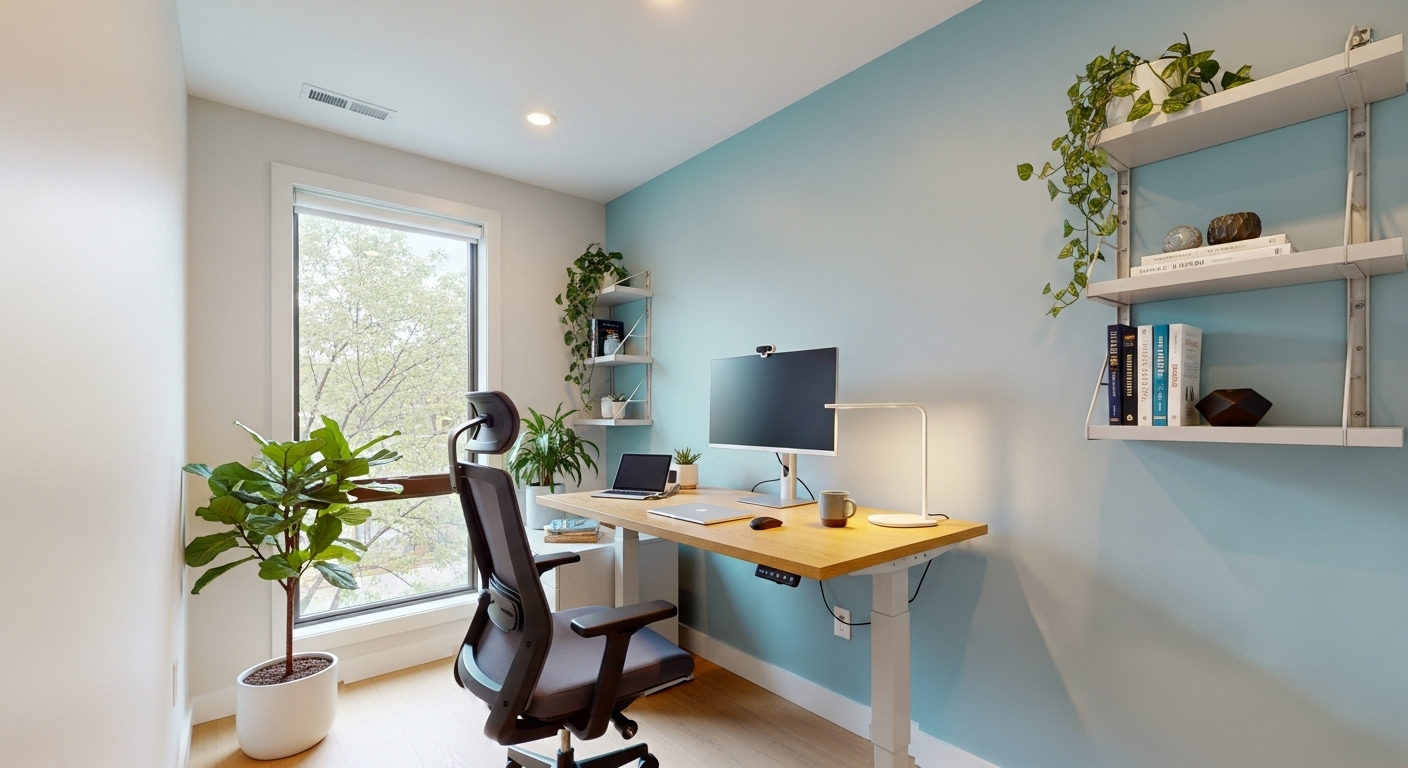Coworking spaces burst onto the professional scene with a vibrant promise: the energy of a bustling office without the corporate constraints, the community of peers without the forced team-building exercises. For many freelancers, remote workers, and entrepreneurs, they represent the ideal blend of structure and freedom. Yet, this very vibrancy can become a double-edged sword. The ambient chatter, the constant flow of people, and the endless networking opportunities can morph from a source of energy into a sea of distractions, threatening the very productivity they were meant to foster. This is the great coworking paradox. The solution isn’t to retreat into isolation but to master the art of deep work within this dynamic environment. This guide provides a practical framework for harnessing the chaos. We will explore how to architect your personal focus bubble, establish powerful daily rituals, engage with the community strategically, and utilize the right tools to transform your shared workspace from a potential distraction zone into a powerhouse of productivity and focused achievement.
Understanding the Coworking Paradox: Energy vs. Entropy
The core appeal of a coworking space lies in its dynamic atmosphere. It’s a physical manifestation of collaborative energy, designed to combat the isolation that plagues many remote professionals. Studies have shown that coworking can increase motivation and professional identity. However, this environment operates on the principles of social physics, where creative energy can easily devolve into productivity-draining entropy. The same open-plan design that encourages serendipitous encounters also ensures that you are an unwilling audience to your neighbor’s sales calls and team debates. The very community you joined for support can become a primary source of interruption. This is the coworking paradox: the pursuit of a productive community can undermine personal productivity. Understanding this tension is the first step toward overcoming it. It requires a mental shift from viewing the space as a purely social hub to seeing it as a professional environment that requires deliberate structure. The goal is to achieve what author Cal Newport famously termed ‘Deep Work’: the ability to focus without distraction on a cognitively demanding task. As Newport noted, this skill is becoming increasingly rare and valuable in our economy.
“To produce at your peak level, you need to work for extended periods with full concentration on a single task free from distraction. Put another way, the type of work that optimizes your performance is deep work.” – Cal Newport
Achieving this state in a coworking space is not about building walls, but about building systems. It means acknowledging that your default state in such an environment is one of ‘shallow work’—tasks that are logistical or non-cognitive, often performed while distracted. To counteract this, you must be intentional, creating a personal system that filters out the noise and allows you to tap into the focused state necessary for high-value output. The following chapters are dedicated to building that system, piece by piece, so you can leverage the energy of the space without succumbing to its inherent chaos.
Architecting Your Focus Bubble: Physical and Digital Boundaries
Your ability to achieve deep work in a shared space hinges on your capacity to create a ‘focus bubble’—a personal sanctuary shielded from external stimuli. This process involves erecting both physical and digital boundaries. First, let’s address the physical. Your choice of location within the coworking space is critical. Avoid high-traffic areas like the kitchen, reception, or main thoroughfares. Opt for a corner desk or a spot along a wall to minimize visual distractions from passing colleagues. The single most important piece of hardware for your bubble is a pair of high-quality, noise-canceling headphones. They serve a dual purpose: they genuinely block out ambient noise, and they act as a universal ‘do not disturb’ sign, signaling to others that you are in a state of focused work. You can even supplement this with a small, physical desk sign if interruptions persist. Secondly, you must tame your digital environment. Your laptop is a portal to infinite distractions. Start by turning off all non-essential desktop and browser notifications. The constant pings and pop-ups from emails, social media, and messaging apps are kryptonite to concentration. Use browser extensions like Freedom or Cold Turkey to block distracting websites for set periods. Organize your digital workspace with the same intention you’d use on your physical desk. Close unnecessary tabs and applications, leaving open only what is essential for the task at hand. Also, consider your digital privacy and security. Always use a VPN on the shared Wi-Fi network to protect your data. By deliberately curating your physical and digital surroundings, you reclaim control over your attention, creating a resilient bubble where deep work can flourish.
The Power of Rituals: Structuring Your Coworking Day
Freedom and flexibility are hallmarks of the coworking lifestyle, but without structure, they can lead to aimlessness and procrastination. The key to sustainable productivity is to impose your own structure through the power of daily rituals. These are not rigid, joyless schedules, but intentional routines that signal to your brain when it’s time to work and when it’s time to rest. Start with a ‘commute’ and a ‘startup ritual’. Even if your travel time is short, use it to mentally prepare for the day. Once you arrive, your startup ritual should be a consistent sequence of actions performed before you dive into your first major task. This could be making a coffee, tidying your desk, reviewing your to-do list for the day, and setting your top three priorities. This simple 15-minute routine creates a powerful psychological transition into work mode. The core of your day should be structured around time blocking. Instead of a reactive, open-ended to-do list, schedule specific blocks of time for your most important deep work tasks. A 90-minute block of focused work, followed by a 15-minute break, can be incredibly effective. Crucially, you must also schedule your ‘shallow work’—emails, administrative tasks, and casual networking—around these deep work sessions, not during them. Just as important is the ‘shutdown ritual’. At the end of your day, take 10-15 minutes to review what you accomplished, plan the next day’s priorities, clear your desk, and formally close your laptop. This ritual provides a sense of closure, preventing work from bleeding into your personal time and allowing you to fully disconnect and recharge, which is essential for long-term productivity and avoiding burnout.
Strategic Socialization: Leveraging the Community Without Derailing Your Day
One of the primary reasons professionals choose coworking spaces is for the community and networking opportunities. However, unstructured socializing is one of the biggest threats to deep work. The challenge is to harness the collaborative benefits of the community without letting random interactions dictate your schedule. The solution is strategic socialization. This means shifting from reactive, impromptu conversations to intentional, scheduled interactions. Instead of leaving yourself open to a ‘shoulder tap’ at any moment, you define the times when you are available to connect. Make use of the space’s designated social areas. Do your socializing in the kitchen, lounge, or common areas, not at your desk in the quiet zone. This creates a clear physical distinction between work time and social time. When you take breaks from your deep work blocks, use that time to walk around, grab a coffee, and be open to conversation. This satisfies the need for social connection while protecting your focused work periods. Be proactive about networking. If you want to connect with someone, don’t just interrupt them; send them a message on the community’s Slack channel or an email suggesting a coffee break at a specific time. Furthermore, leverage the formal community events. Attending the scheduled happy hours, lunch-and-learns, or workshops is a far more efficient way to meet people than relying on random encounters. By being intentional with your social energy, you get the best of both worlds: you protect your invaluable deep work time while still building meaningful professional relationships that can lead to collaboration, new clients, and genuine friendships.
Mastering the Art of Interruption Management
Even with the best-laid plans, interruptions are an inevitable part of the coworking experience. The key is not to eliminate them entirely—an impossible task—but to manage them effectively so they don’t completely derail your focus. Every interruption forces a ‘context switch,’ pulling your brain out of a complex task and forcing it to re-engage with something new. Research shows it can take over 20 minutes to regain the same level of deep concentration after just one minor interruption. Therefore, managing them is a critical productivity skill. Your first line of defense is non-verbal. As mentioned, noise-canceling headphones are a powerful deterrent. Maintaining focused body language—leaning in towards your screen, avoiding eye contact with passersby—also signals that you are not to be disturbed. However, when someone does approach you, you need a polite but firm verbal strategy. Have a few pre-planned scripts ready. A simple, ‘Hey, I’m right in the middle of something and can’t break my focus. Can I find you in about an hour when I take a break?’ works wonders. It acknowledges the person while protecting your time boundary. Another option is to stand up, briefly step away from your desk, and say, ‘Let’s chat over by the kitchen so I don’t disturb others.’ This moves the conversation out of your dedicated focus zone. The goal is to be assertive without being rude. Most people in a coworking space understand the need for focus and will respect your boundaries if you communicate them clearly and politely. Mastering these small interactions is crucial for defending your deep work sessions and maintaining control over your day.
Tools of the Trade: The Essential Coworking Tech Stack
While mindset and rituals are foundational, having the right tools can significantly enhance your ability to be productive in a coworking environment. Your ‘coworking tech stack’ should be designed to improve focus, ergonomics, and efficiency. The cornerstone, as previously emphasized, is a pair of premium noise-canceling headphones. Brands like Sony, Bose, or Apple offer models that create a remarkable cone of silence. Next, consider your ergonomic setup. Working hunched over a laptop for eight hours is a recipe for back and neck pain. A lightweight, portable laptop stand to elevate your screen to eye level and a separate, ergonomic mouse and keyboard are game-changers for your physical well-being and long-term comfort. For digital organization, a robust task management app is non-negotiable. Tools like Asana, Todoist, or Trello help you externalize your to-do list, prioritize tasks, and track progress, freeing up mental bandwidth. This clarity is essential when you’re surrounded by potential distractions. To combat digital temptation, focus apps like Freedom or Forest, which block distracting sites and applications for set periods, are invaluable for enforcing your deep work blocks. Finally, secure your connection. A subscription to a reliable Virtual Private Network (VPN) like NordVPN or ExpressVPN is essential. It encrypts your data on the shared public Wi-Fi, protecting your sensitive information from potential security threats. Investing in this curated set of physical and digital tools isn’t an extravagance; it’s a strategic move to create a seamless, secure, and highly productive work experience, no matter how chaotic the surrounding environment might be.
Conclusion
Thriving in a coworking space is an art of balance. It’s about drawing energy from the community without letting it deplete your focus. It’s about embracing flexibility while creating personal structure. As we’ve explored, the path from distraction to deep work is paved with intention. It begins with acknowledging the inherent paradox of the coworking environment—that its greatest strengths can also be its most significant challenges. By consciously architecting a physical and digital focus bubble, you create a sanctuary for concentration. Establishing powerful daily startup and shutdown rituals provides the psychological scaffolding for a productive day, turning chaotic freedom into structured flow. Socialization becomes a strategic asset rather than a random liability when you engage with the community on your own terms. Learning to politely and effectively manage interruptions protects your most valuable asset: your attention. And equipping yourself with the right tech stack—from noise-canceling headphones to a secure VPN—provides the practical support system for peak performance. Ultimately, harnessing the chaos of a coworking space isn’t about isolating yourself. It’s about building a robust personal system that allows you to filter the noise, engage purposefully, and unlock the profound level of focus required to do your best work. By implementing these strategies, you can transform your shared office from a place of potential friction into a powerful catalyst for professional growth and unparalleled productivity.





